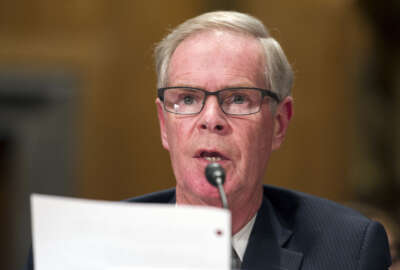

The Government Accountability Office says it's helping agencies move from a "pay-and-chase" mentality to a broader, more risk-based approach to combating fraud. Yet...
A tool the Government Accountability Office released about one year ago to help agencies prevent ever increasing instances of fraud is taking on a new meaning after the Office of Management and Budget’s long-awaited update to Circular A-123.
“What we’re doing at this point is helping federal agencies to shift their thinking from very specific fraud controls to a more strategic, risk-based approach,” Tonita Gillich, assistant director for forensic audits and investigative service at the Government Accountability Office, said during an Oct. 11 panel discussion at the SAS Government Forum in Washington.
The goal is to help agencies focus more on the broad picture rather than specific fraud schemes or controls, she said.
That method is consistent with the spirit of OMB’s Circular A-123 update, which introduces a governmentwide risk management program and updates the internal controls program to better align with recent changes from GAO.
And GAO’s fraud prevention framework, which the oversight agency released in July 2015, is helping agencies take a more risk-based approach to fraud, Gillich said.
“We know that not all improper payments result in fraud and not all fraud result in improper payments, but nonetheless the framework helps federal managers in that space as well,” she said. “I think federal program managers are going to be leveraging those types of synergies as part of taking a strategic, risk focused approach to managing fraud risks.”
It’s long been a challenge for many agencies, said Gillich, “moving from that pay-and-chase to a more predictive, risk-based approach.”
The “pay-and-chase” approach helps many agencies make quick, flashy moves to bring back faulty payments. For example, data analytics helped the FBI and Health and Human Services Department take down more than 300 fraudsters in June for bilking about $900 million from Medicare.
Instances like that are impressive, said former Postal Service Inspector General David Williams, who now teaches at George Mason University’s School of Policy, Government and International Affairs. But they do little to address the root causes behind fraud within an agency.
“The results are good, but they’re episodic, and they’re floating detached from a comprehensive attack on the problem,” Williams said. “Without that map, our attack is going to be ineffective. We don’t know without a map of where fraud is and where programs are vulnerable, if we have too many resources or if we have too few resources. We don’t know if fraud is growing or fraud is shrinking.”
Congress shares those similar concerns and once again voiced frustration that agencies are unable to determine just how much of the $136.7 billion they issued in improper payments in fiscal 2015 were due to fraud.
Williams said he’s optimistic that agencies can take the next step forward in addressing fraud and other improper payments.
“What I see is a world where we have a map, and we direct resources, programmatic, and program managers and auditors and investigators against those problems in proportion to their threat that we face,” he said. “That’s doable. That’s not that hard, but you have to be honest and you do have to call people when they’re cheating and when they’re trying to save embarrassment.”
But beyond a more holistic approach to preventing fraud risks, agencies need better data analytics tools to help study the root causes, Williams said.
“We need to put in place 24-7 heartbeats that never come to rest combating this problem,” he said. “The alerts need to go to program managers, the main people that combat fraud, and to auditors and to the investigators, whether it’s payment inaccuracies or outright fraud.”
There are also issues of data access and complicated relationships among agency leadership. Chief financial officers typically serve as the main people in charge at the agency of combating fraud, while inspectors general try to catch fraudsters who have passed through the agency’s system. That relationship between the two leaders is often combative, Williams said.
“I see a time when there could be a better relationship,” he said. “Possibly the IG Act needs to be clarified for some of the IGs. We can’t let independence prevent us from attacking fraud. We can’t say well I can’t really join with the CFO.”
Williams suggested the administration should form a presidential commission to look more holistically at fraud prevention. He also proposed creating a center of excellence with specialized training for CFOs and IGs on financial management and research on long-ignored solutions to fraud.
Copyright © 2025 Federal News Network. All rights reserved. This website is not intended for users located within the European Economic Area.
Nicole Ogrysko is a reporter for Federal News Network focusing on the federal workforce and federal pay and benefits.
Follow @nogryskoWFED

